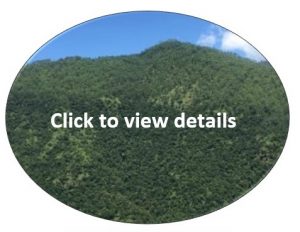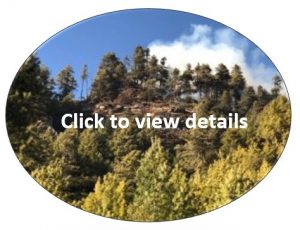Area and Location
Royal Manas National Park is the oldest National Park situated in the south central foothills of Bhutan. Spanning an area of 1057 km2, the national park falls within the political jurisdiction of three Dzongkhags i.e. Zhemgang, Sarpang and Pemagatshel. The national park can be accessed from Bhutan, and the Indian state of Assam.
Connected by the biological corridors to Jigme Singye Wangchuk National Park in the northwest, Phibsoo Wildlife Sanctuary in the southwest, Phrumsengla National Park in the northern center, Jomotshangkha Wildlife Sanctuary in the south east, the location of Royal Manas National Park is notably outstanding and forms the cornerstone of protected area network in Bhutan. Further the national park abuts with Indian Manas National Park in the south, forming a significant part of Transboundary Manas Conservation Area (TraMCA) for promoting landscape level ecosystem management.
Edged against the magnificent emerald Manas River, the national park is arguably an oasis filled with remarkable diverse floral and faunal assemblage. Dense towering mountains punctuated with rivers and small streams invariably characterize the park. The park habitat includes extensive areas of tropical monsoon forest interspersed with swathes of natural grasslands and wide river-beds along the southern border. The lowest hills of park are clothed in tropical moist forest, which gives way temperate broadleaf forests in the higher elevations. A dense oak forest dominate the higher ridges.
Management History and Evolution of Management Plan
The Royal Manas National Park is the earliest addition to the protected area network in Bhutan. It started as a game sanctuary and was later notified as Manas Wildlife Sanctuary in 1964.In the year 1993, it was upgraded and constituted as Royal Manas National Park through mergence of Namgyel Wangchuck Reserve and Manas Wildlife Sanctuary. The first conservation management plan was enacted for the period from 1995-2000 chiefly prioritizing on infrastructure and human resource development. The paucity of scientific studies and other socio economic activities were mainly due to the lack of technical competency and political upheaval, which prevailed along the neighboring country. Over the years, there has been a paradigm shift in the management of park recourses giving prominence to scientific core management based on park zonation. The use of cutting edge scientific tools such as the non-invasive camera trap method in studying the ecology of the big cat species has been a key feature in linking research to on ground conservation activities. Anti-poaching and socio-economic activities, habitat management and communication facilities were also up scaled in the second management plan period from 2009-2014.
Conservation Significance
Located at the convergence of the Indo-Gangetic and Indo-Malayan bio-geographical realm, the Royal Manas National Park forms a part of the ten global biodiversity hotspots constituting remarkably a diverse and rich ecosystem of international significance. The national park is the central thread that connects other protected areas in Bhutan and further adjoins with the World Heritage Site (Manas National Park) in India forming an integral part of Transboundary Manas Conservation Area (TraMCA).The region forms an indispensable corridor for the Terai-Arc tiger Conservation Complex between Terai regions of Nepal and India with landscapes in northeastern India, Myanmar and Southeast Asia. The significance of the entire Manas landscape as a single Transboundary entity and as conservation complex is acknowledged globally by no less than the UNESCO World Heritage Centre, Paris (Borah et al.2012).This conservation complex is also identified as one of the important Tiger Conservation Landscape (TCL) #37(Namdapha National Park- Royal Manas National Park) for the long-term survival of tigers in the wild (Sanderson et al. 2006).
The unique landscape of RMNP forms an important natural conservatory of the country representing outstanding habitat diversity ranging from tropical monsoon forests (< 500m) and subtropical forests (500-1000m) to warm broadleaved forests (1000 m-2000m) and cool broadleaved forests (2000m-2714m). The park owes its name and also much of the spectacular grandeur from the life giving Manas river`. The river Manas forms the lifeline of RMNP providing a large track of highly significant watershed area. Emerging from the convergence of Drangme Chhu and Mangde Chhu, the Manas river is one of the largest Himalayan tributaries of the mighty Brahmaputra river.
The national park is home to two endemic and globally threatened species viz. golden langur and pygmy hog. It is one of the few places in the world to harbor highest felid diversity of 8 species of which 5 species are listed in red list of IUCN. Renowned for its spectacular landscape suffused with one of the highest diversity of species in the country, it provides a safe refuge for charismatic species, which are endangered such as the Royal Bengal tiger, golden langur, clouded leopard, Asian elephant, Asiatic water buffalo, dhole and Asiatic gaur. RMNP is now increasing acknowledged as an important source population of Royal Bengal Tiger and their conservation now requires, more than ever before, informed conservation interventions guided by sound ecological knowledge.
Biodiversity Richness
RMNP is famed for harboring one of the greatest populace of wildlife diversity. The park has 558 species of flora, 65 species of mammals, 489 species of birds, 60 species of fishes and more than 180 species of butterfly species recorded till date. Out of the 65 mammal species recorded, 2 species are critically endangered, 8 species are endangered, 9 species are near threatened and 11 species belong to vulnerable list. Species from 8 orders belong to IUCN Red List.
Known as the paradise for birdlife, Royal Manas National Park has an incredibly high diversity of avifauna with a record of 489 species listed till date (April 2016). Within an area of 1057 sq. km, more than 70% of bird species found in Bhutan are present in RMNP. The extraordinarily rich bird diversity is mainly attributed to existence of vast areas of relatively undisturbed natural habitats, with swathes of savannah grasslands to vast expanses of old growth tropical and subtropical and temperate forests along wide altitudinal range. The park is home to three species of critically endangered species, White-bellied Heron (Ardea insignis), White-rumped Vulture (Gyps bengalensis) and Red-headed Vulture (Sarcogyps calvus), five species of Near Threatened, and six species are Vulnerable (Tragopan satyr) (Indicator xanthonotus) (Buceros bicornis) (Speclaeornis caudatus) and (Alcerdo Hercules) in the IUCN redlist of threatened species. It is one of the few protected areas in Bhutan, providing a safe refuge for all the four hornbill species.
The national park is also home to globally rare and endangered floral species such as Dalbergia oleveri ( IUCN endangered species), Aquilaria malaccensis (IUCN vulnerable) species) and Taxus baccata (Scheduled 1 species in FNCA 1995) and Podocarpus neriifolia the only conifer broadleaved tree found rarely distributed in the park area. The rapid assessment of herpetofauna diversity survey conducted along the fringe areas of Royal Manas National Park showed an addition of 8 new species. The Assam day gecko, Cnemaspsis assamnesis, which was recorded in the park, is known to be one of the rarest gecko so far known only from Northeast India.
Climate and Vegetation
Royal Manas National Park has a moist subtropical to cool temperate climate with four distinct seasons. Summer lasts from May to August with annual maximum temperature ranging from 20oC to 40oC. The rainfall ranges from 200mm to 4400 mm annually. Autumn lasts between September and November experiencing changeable weather, which gradually takes on the shape of winter pattern. Characterized by cool weather and fog, winter is relatively drier with rare shower and average temperature ranges from 5oC to 20oC.The park experiences strong to moderately strong wind in the months of February- April.
The forest types of Royal Manas National Park are broadly classified into four eco-floristic zones such as Tropical monsoon forests (< 500 m), Sub-tropical forests (500 -1000 m), Warm broadleaved forests (1000-2000 m) and Cool broadleaved forests (2000-2714 m) (Wangchuk 2009).
Geology, Rock and Soil
The geology of RMNP consists mostly of Buxa formation characterized of dolomites, quartzite, variegated phyllite, overlain by Manas formation and Shumar formation characterized of meta sedimentary phyllite, quartzite and thin calcareous bands containing dolomite and limestone bed rocks (Sherub and Wangchuk 2006). The southern part of the park consists of bhabar tract containing sandstone, limestone and shale. Bhabar tract formation is very porous due to the deep deposits of coarse detritus overlain by sandy loam and a thin layer of humus. Alluvial and colluvial formation result from slow erosion of rock from the northern area of the park stemming as a result of heavy rainfall during monsoon. The alluvial formation is distinguished by mixture of boulders and sand, covered by debris, sand, soil, silt and clay brought down by the rivers.
Hydrology and Water Sources
Royal Manas National Park abounds with perennial rivers and transitory streams and rivers formed during the peak monsoon season. The largest river of the country, Manas drains about two third volume of the water of the country. It springs from four major tributaries viz. Mangde Chhu, Chamkar Chhu, Kuri Chhu and Drangme Chhu in eastern and central Bhutan. The other perennial rivers such as Udigang, Kukulung and Kanamakura river forms some of the important watersheds of RMNP. Waterholes and mineral licks form an integral part of functioning ecosystem. Waterholes and saltlicks are erratically distributed with higher density along the foothill belt of the park.
Park Management Zones
In the first Conservation Management Plan five management zones were categorized in the year 1995-2000 depending on the various land-use types and human settlements. The park zonation was later reformed into three zones namely core zone, multiple use zone and buffer zone in 2012 to achieve the vision and management objectives of RMNP.
Contact Info:
- Email ID – rmnp.gelephu@gmail.com
- Samten Wangchuk, Chief Forestry Officer – 17986369
- Telephone Number: PABX – 00975 6 252258
- Fax number – 00975 6 252255
![]()









